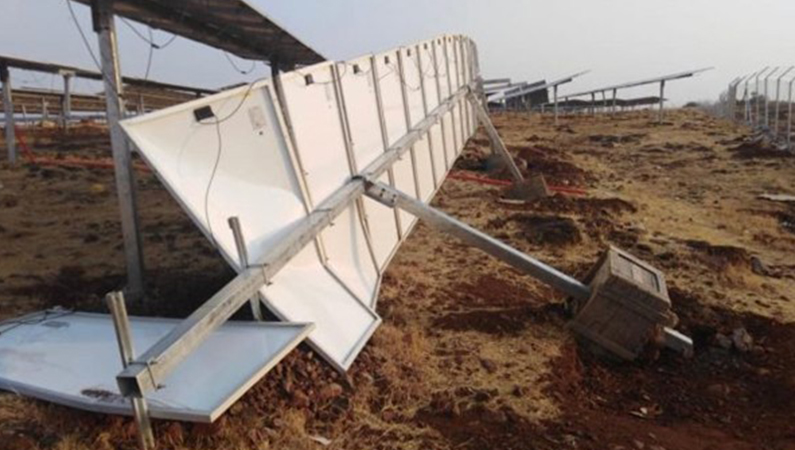Most solar panels must withstand wind speeds of up to 225 kilometers per hour (62.5 meters / second). Manufacturers design solar panel systems by taking local wind patterns into account. However, your solar panel system may still struggle to cope with such strong winds and withstand severe weather conditions.
Solar panel stands are designed to withstand wind speeds up to the following values:
– At least 120 km/h: Minimum design standard for low wind risk areas.
– 160-180 km/h: Commonly used value range for most regions in Turkey.
– 200-250 km/h: High-security designs for areas at risk of storms and hurricanes or for special projects.
Regional Wind Speed Examples in Turkey:
- In Central Anatolia Region, the design wind speed is typically around 100 km/h–108 km/h.
- In the Aegean and Marmara regions, wind speeds can reach 118 km/h -130 km/h.
- Wind speeds can be even higher in the Black Sea regions and in some high-altitude areas.
Wind speeds vary by region. The highest recorded wind speed in Turkey occurred in Tokat province on January 1, 1978, reaching 176 km/h a national record.
The Seven Wind Speed Sensor has a measuring range of 252 km/h, making it suitable for monitoring high-wind conditions.
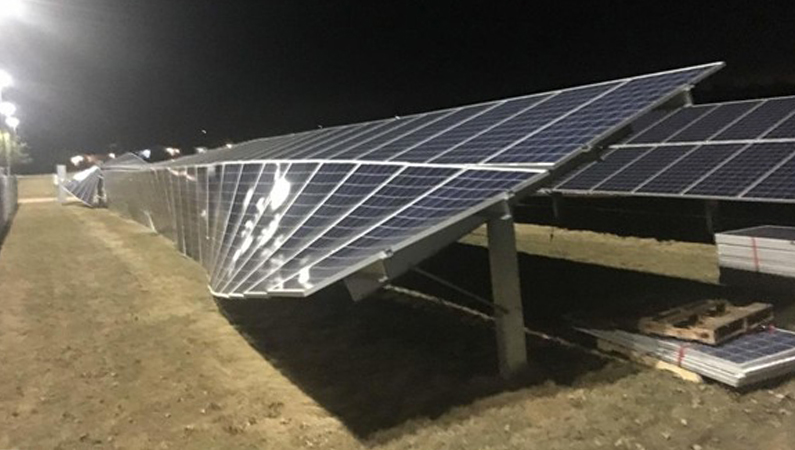
Support Structures for PV Panels Damaged by Storm Winds
Wind Speed Sensors for PV Power Plants
Wind speed sensors also known as anemometers are essential components in weather monitoring systems used at Photovoltaic (PV) power plants. These intelligent and professional measuring instruments play a critical role in environmental monitoring.
Why is a wind speed sensor necessary for PV sites?
Reliable wind data is crucial to optimize plant operations and protect equipment. Here’s how wind affects your PV system:
- Panel Temperature Regulation: Wind speed can either increase or decrease the temperature of the panels. In many cases, wind provides a cooling effect, which can significantly affect panel efficiency.
- Pollution and Pollination Impact: Wind affects the accumulation of dust and particles on panels. It also has an effect on pollination on the panel surfaces, influencing maintenance schedules and cleaning requirements.
- Insurance Compliance: Many insurance companies require verification that a wind speed sensor is installed on-site before issuing or maintaining coverage.
It is designed for PV power plant monitoring and can work in tough weather. SEVEN also offers a heated wind speed model to stop ice from forming.
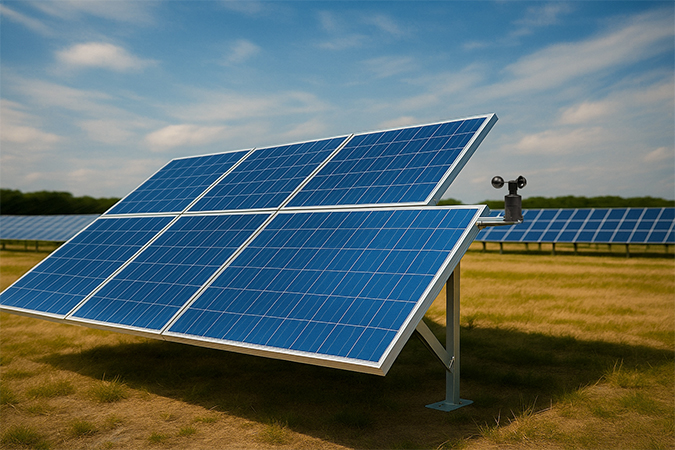
SEVEN Wind Speed Sensor Function & Working Principle
SEVEN Wind speed sensors are designed to measure horizontal wind speed, independent of wind direction. They operate by converting wind motion into an electrical signal, measured in meters per second (m/s). At the core of the device is a reed relay activated by a rotating magnet, which is mechanically connected to wind cups.
The measured wind data is then transmitted to data loggers or receiver units via analog (4–20 mA) or digital (Modbus RTU) outputs, depending on the system configuration.
Easy Installation
Seven Sensor 3S-WS series follows a Plug & Play approach, allowing quick and secure installation by any qualified electrician.
Mounting Options
The sensor can be mounted either on a vertical pipe or on a ground mounting structure. It must always be placed parallel to the ground for accurate measurements.
1.Vertical pipe mounting
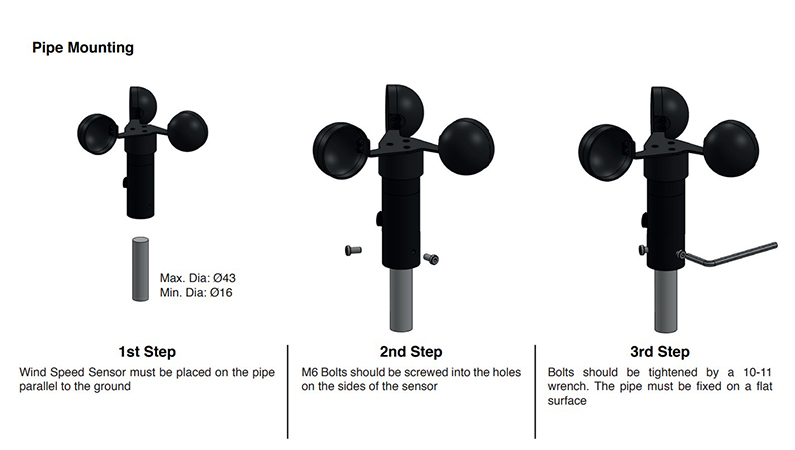
2.Ground mounting structures
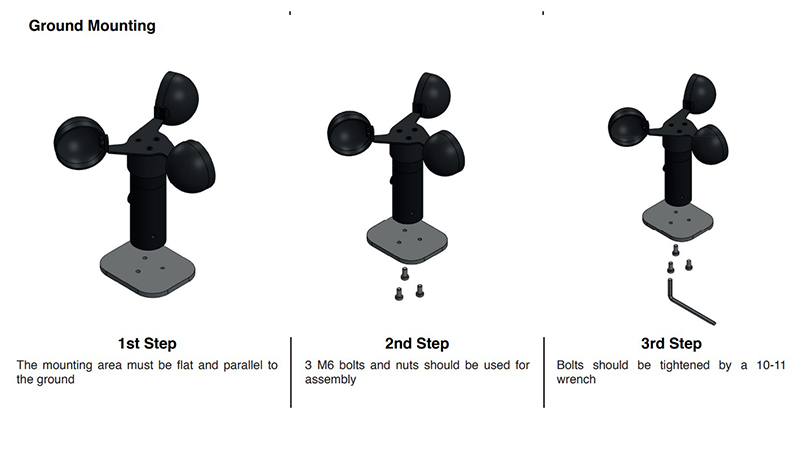
Tip: When installing on rooftops, be sure to position the sensor away from sources of wind turbulence to ensure accurate readings.
Product Lineup
SEVEN offers wind speed sensors with either plastic or anodized aluminum housing options.
Aluminum Housing Models
3S-WS-PLS-A, 3S-WS-I-A, 3S-WS-MB-A
- 3S-WS-PLS-A: Pulse output. Compatible with SEVEN Irradiance Sensors, Sensor Boxes, data loggers, and other pulse-input devices.
- 3S-WS-I-A: 4–20 mA output. Compatible with all data loggers supporting 4–20 mA input.
- 3S-WS-MB-A: Modbus RTU output. Compatible with all data loggers supporting Modbus RTU.
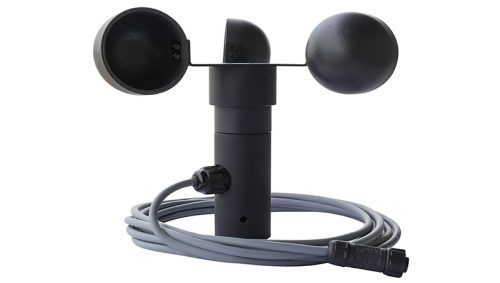
Wind Speed Sensor with Aluminum Housing Material
Plastic Housing Models
3S-WS-PLS-P, 3S-WS-I-P, 3S-WS-MB-P
These models are technically identical to their aluminum counterparts, with the only difference being the housing material. Instead of aluminum, the housing is made of UV-resistant ASA plastic, providing a lightweight and cost-effective solution while maintaining durability.
- 3S-WS-PLS-P: Matches to the 3S-WS-PLS-A Pulse output.
- 3S-WS-I-P: Matches to the 3S-WS-I-A 4–20 mA output.
- 3S-WS-MB-P: Matches to the 3S-WS-MB-A Modbus RTU output.
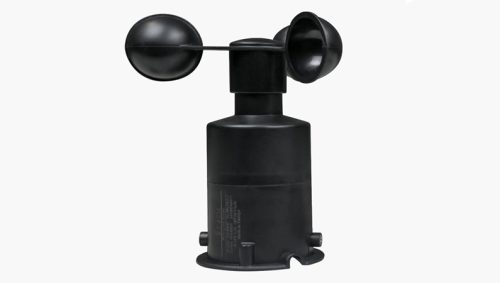
Wind Speed Sensor with Plastic Housing Material
